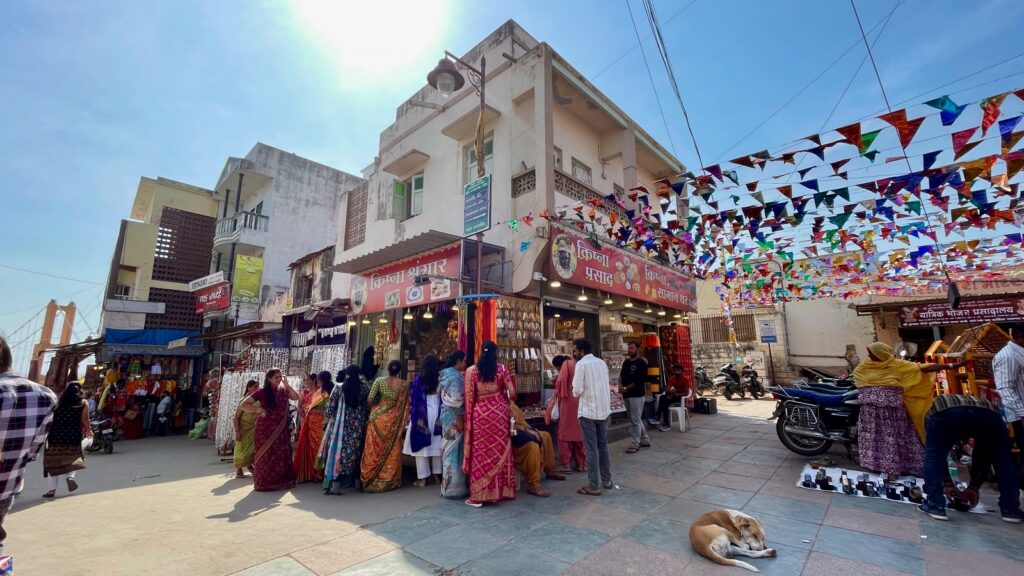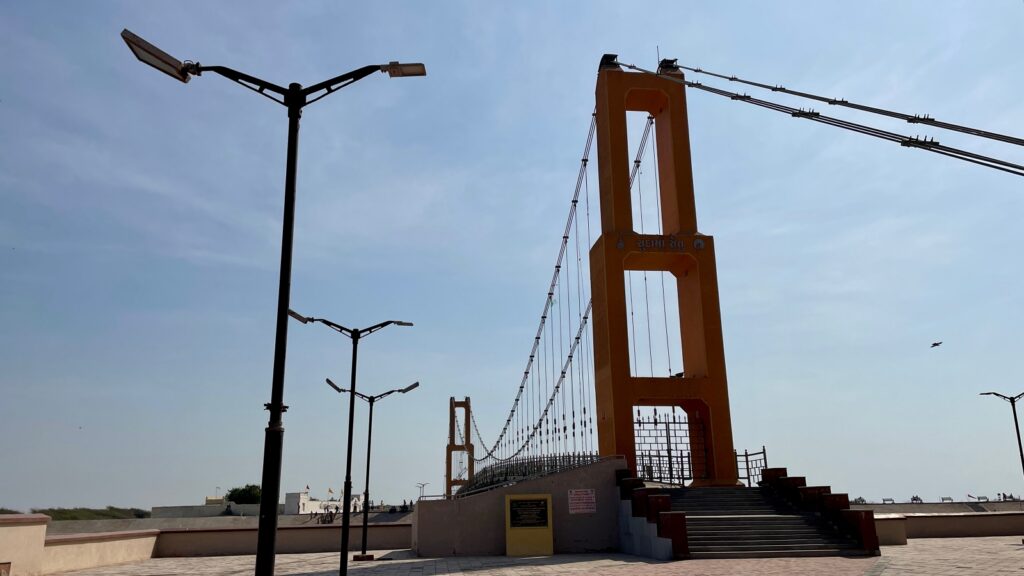Odyssey of Shree Dwarkadhish Temple in Dwarka
At the Shree Dwarkadhish Temple, also known as “Jagat Mandir” (Universe Mansion), Lord Krishna rocks the title “Dwarkadhish” as the King of Dwarka
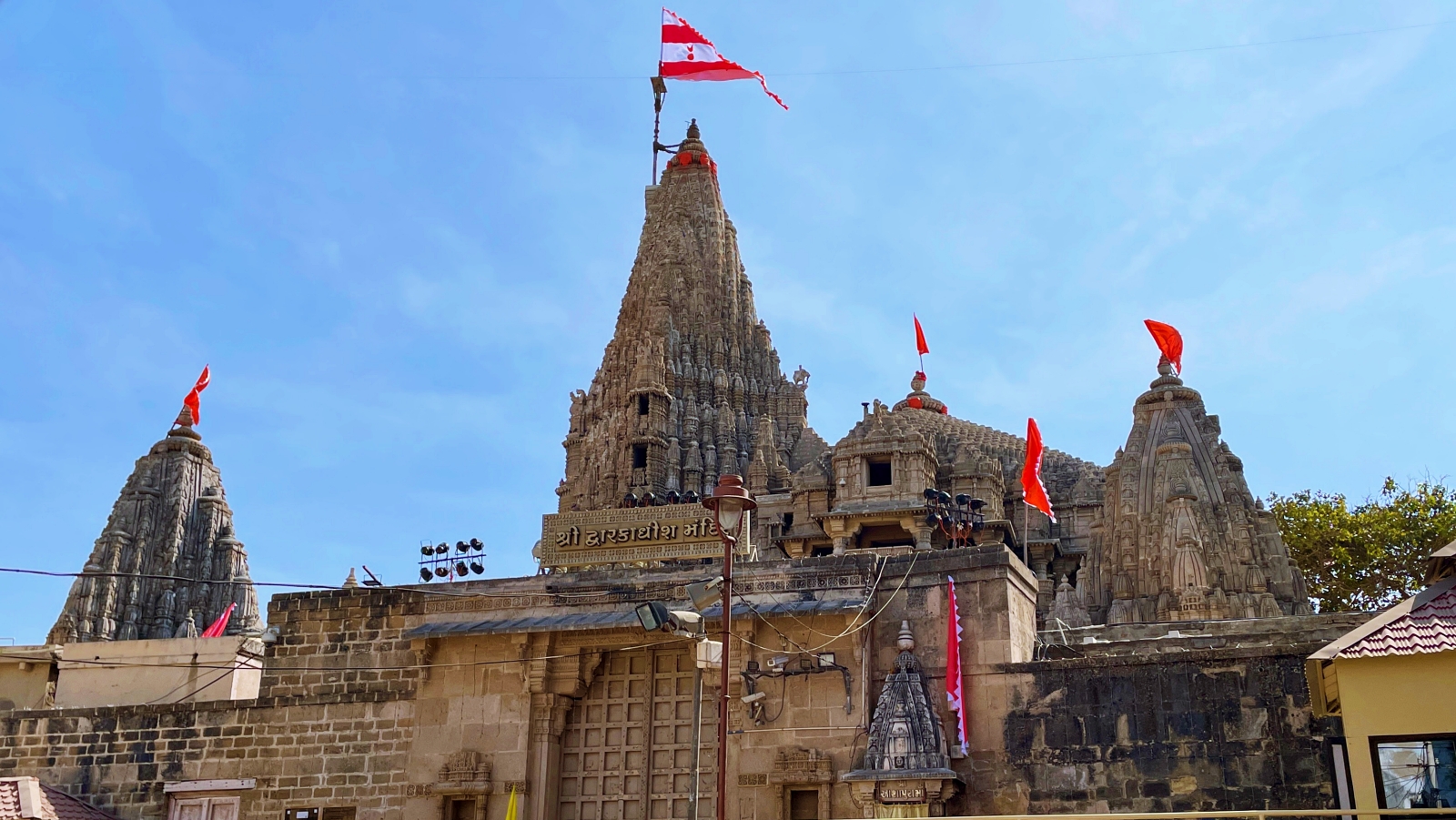
Located in Dwarka City, Gujarat, this five-storey marvel, propped up by a cool 72 pillars, is a must-visit for any Hindu on the “Char Dham” pilgrimage circuit. While history buffs might scoff at its “mere” 200 BCE origins, remember, this temple predates sliced bread by, like, millennia. It, however, received a major makeover in the 15th-16th century, proving some things just get better with age (like fine wine, or maybe really, really old temples). Shree Dwarkadhish Temple was originally built by Krishna’s grandson, Vajranabha, right where the blue god, described as nilotpala-dala, stayed. The question often arises: why blue? Yet, Krishna’s colour isn’t a product of artistic imagination; it’s documented in authoritative scripture.
Dwarkadhish Temple: Unveiling the Legends
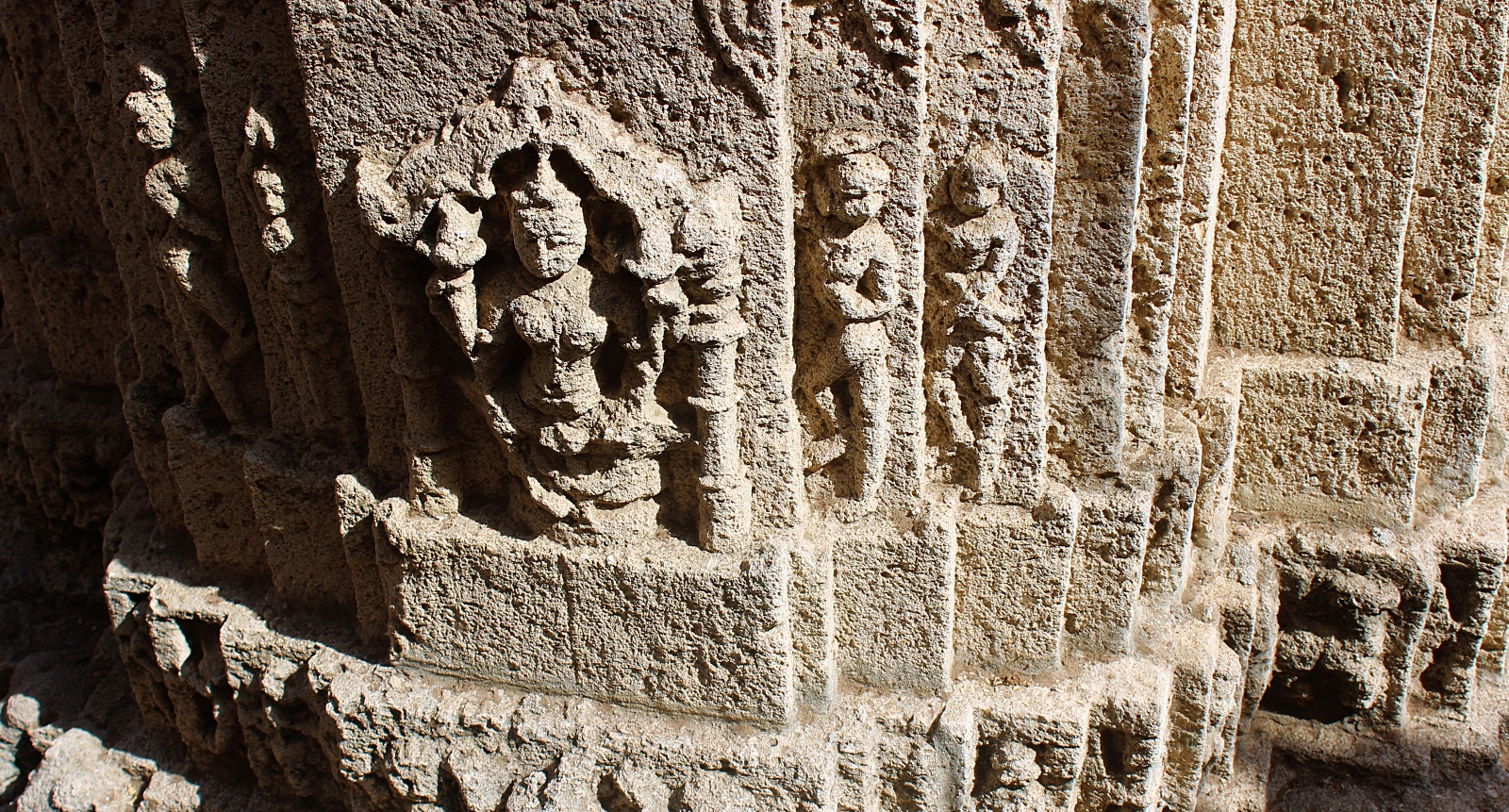
Unfortunately, Mahmud Begada wasn’t a fan of divine digs and flattened the place in 1472. But the temple bounced back like a spiritual boomerang, becoming part of the legendary Char Dham pilgrimage. It was even visited by the 8th-century philosopher and Hindu theologian, Adi Shankara. The other three Char Dham destinations are Rameswaram, Badrinath, and Puri. Dwarkadhish Temple is the real peak experience (at least spiritually, and maybe geographically at 40 feet above sea level). This isn’t just any temple, it’s the 98th Divya Desam of Vishnu, basically a VIP lounge in the Hindu temple scene, immortalized in the “Divya Prabandha.” So, what’s the layout like? Picture two rooms: the “Nijamandira” (aka Krishna’s personal haven) and the “antarala” (the waiting room).
Krishna and Rukmini
According to Hindu legend, Dwarka rose from the sea on land gifted by Krishna. In the Mahabharata, the sage Durvasa tested Krishna and Rukmini’s hospitality by demanding they pull his chariot like horses. Despite Rukmini’s stumble, they complied until she grew weary. Using his divine powers, Krishna summoned the river Ganga to the spot by digging a miraculous hole. Krishna then quenched her thirst, illustrating his compassion amidst challenges. Durvasa, however, angered by this display, cursed Rukmini to remain in that very place. Legend holds that the temple housing Rukmini’s shrine marks the spot where she stood. However, recognizing the divine couple’s innocence, Durvasa blessed Krishna with invincibility everywhere but the soles of his feet. He also declared that Rukmini would forever be Krishna’s foremost spouse, destined to accompany him into eternity.
Dwarka, in Gujarat, boasts a history as colourful as its sunsets. Nestled along the banks of the river Gomti, this town is steeped in legend as the fabled capital of Krishna. Now, while legends claim it was an ancient port city, archaeological clues, including inscribed stone blocks and evidence of ancient construction techniques, hint at its historical significance. Some underwater structures and anchors discovered on-site points to the late Middle Ages. But hey, even if it’s not quite Atlantis, coastal erosion probably swallowed up some of its ancient glory. So, what happened? Well, the ocean, that’s who. Turns out, even godly kingdoms aren’t immune to a little erosion therapy. But Dwarka still packs a punch with its rich heritage and vibrant present.
1473 Desecration by Mahmud Begada
In the 15th century, Dwarka’s ruler, Raja Bhim, a Vadhel, wielded authority over the local Vagher pirates. During one stormy sea voyage, maulana Mahmud Samarqandi found himself at the mercy of these pirates near Dwarka. They pillaged his vessel, kidnapped women, and abandoned Mahmud and his sons at sea. Seeking justice, Mahmud Samarqandi appealed to Sultan Mahmud at Mustafabad’s court, prompting the sultan’s decision to march on Dwarka in 1473. Raja Bhim and his Rajputs retreated to the island fortress of Bet, allowing Mahmud Begada to ransack Dwarka, desecrating its buildings and the revered Dwarkadhish temple, destroying its idol. The present icon of Dvārakādhīśa was later installed by Aniruddhaśrama Śaṅkarācārya in 1559.
The Temple Architecture
The temple spans an area of 27 meters by 21 meters, with a length from east to west of 29 meters and a width from north to south of 23 meters. Constructed primarily of limestone, its intricate carvings adorn its façade. This five-storied architectural marvel stands upon 72 pillars (although some sources mention a sandstone temple with 60 pillars). Notable entrances include the Moksha Dvara, translating to “Door to Salvation,” serving as the main entry, and the Svarga Dvara, or “Gate to Heaven,” as the exit. Beyond the Svarga Dvara lie 56 steps leading down to the Gomati River.
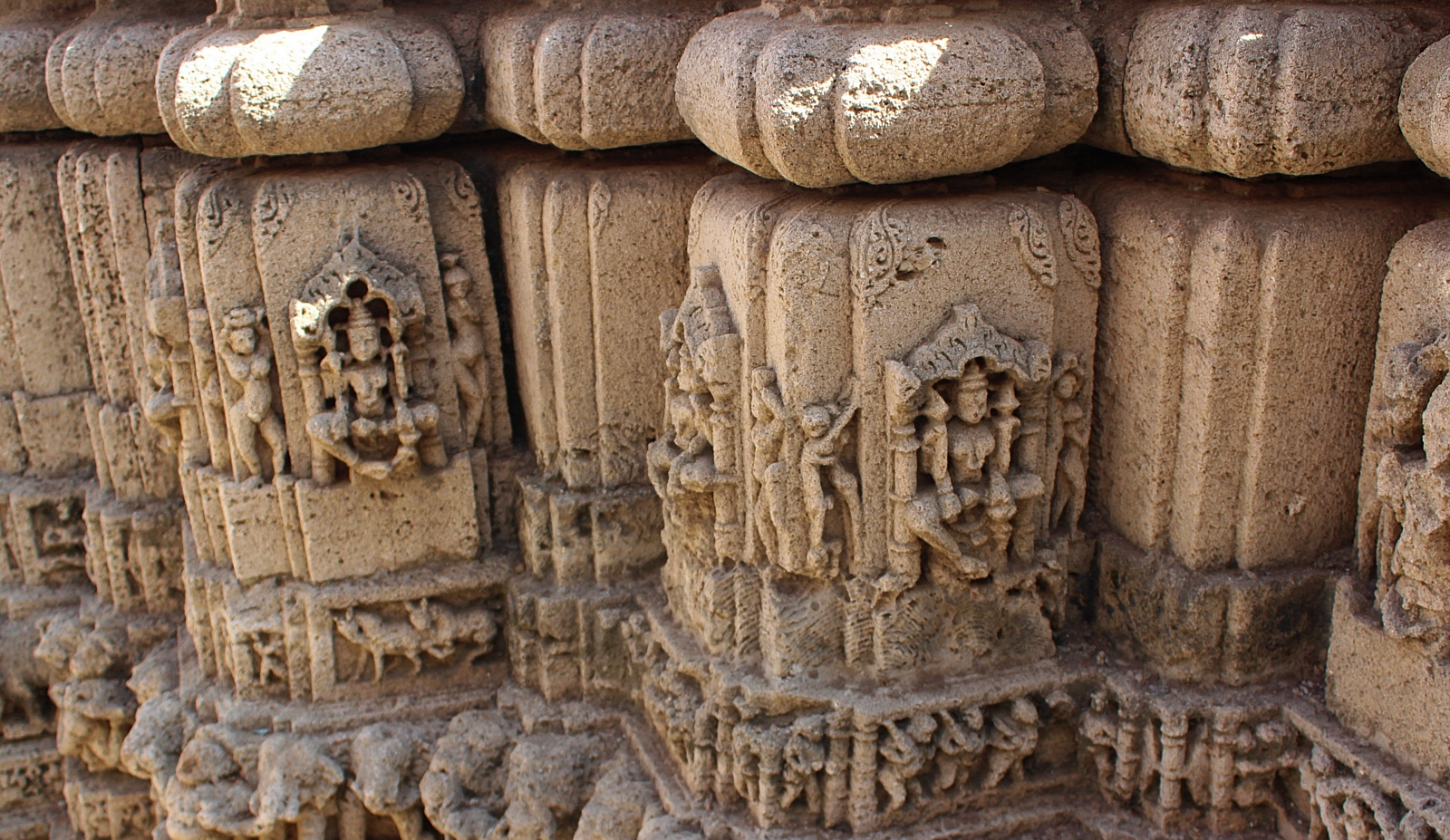
The temple’s pinnacle soars to an impressive height of 256 ft. Adorning this pinnacle is a flag bearing symbols of the sun and moon, signifying the enduring presence of Krishna as long as these celestial bodies grace the Earth. This triangular flag, stretching 50 feet in length, undergoes four changes daily, each time replaced with a new one. Devotees generously contribute funds to sponsor these flag changes, with the proceeds channelled into the temple’s trust fund, supporting its ongoing operations and maintenance.
Krishna Circuit
Being intertwined with the ancient city of Dvārakā and the legendary Krishna of the Mahabharata, this site holds profound significance as a pilgrimage destination for Hindus. It forms a crucial node within the revered “Krishna” circuit, alongside the 48 kos parikrama of Kurukshetra in Haryana and the Braj Parikarma in Mathura, Uttar Pradesh. Dwarka Parikrama (Dwarkadish Yatra) at the Dwarkadhish Temple in Gujarat completes this trio of sacred journeys. Although its origins remain shrouded in mystery, the Advaita school of Hinduism, led by Adi Shankara, credits the seer with the establishment of Char Dham, which has since become an integral part of Hindu monastic tradition across India.
The four monasteries stand sentinel at the four extremities of India, each accompanied by a revered temple: the Badrinath Temple in the North, the Jagannath Temple in the East, the Dwarakadhish Temple in the West, and the Ramanathaswamy Temple in the South. While these temples may align with different sects of Hinduism, namely Shaivism and Vaishnavism, the Char Dham pilgrimage is inclusive, welcoming devotees from all Hindu backgrounds. This sacred journey, traversing the cardinal points of India, holds profound significance for Hindus, who often aspire to undertake it at least once in their lifetime. Traditionally, the pilgrimage commences from Puri in the east, proceeding clockwise—a customary practice reminiscent of circumambulation in Hindu temples.
Dwarkadhish Temple and Festivals
The temple welcomes visitors from 6:00 am to 1:00 pm and again from 5:00 pm to 9:30 pm. The Krishna Janmashtami festival, celebrating the birth of Krishna, was initiated by Vallaba (1473-1531). Legend has it that Meera Bai, the renowned Rajput princess, poet-saint, and devoted Krishna devotee, attained union with the deity at this sacred site. Dwarka holds a distinguished place among the Sapta Puri, the seven holiest cities in India. Situated close to the Dvaraka Pitha, one of the four religious centres established by Adi Shankara (686-717), the temple stands as a testament to his efforts in harmonizing Hindu religious beliefs across the nation.
Where to stay: The Reef Resort Shivrajpur

